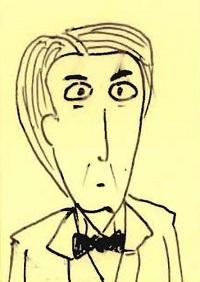VIII - Stanley Bruce
There is a general trend in Australia politics that when the economy is doing well, the nation will tend to drift to the right and elect economically rightist governments; likewise when things turn sour, the country drifts left.
After the leader of the Country Party Earle Page had made it very clear that the party wanted Billy Hughes gone, Hughes resigned and Stanley Bruce took over as leader of the Nationalist Party and the coalition of 45/70.
At 39 years old, Bruce is still the second youngest Prime Minister to take office and it is that relative youth and spriteliness which propelled his government along.
Bruce had been sent as a delegate to the League of Nations in 1921 and argued for disarmament among nations and had in a small way, boosted Australia's image on the world stage.
He was ostensibly a business man first and foremost and as an importer, he butted heads with Billy Hughes on the issue of the Commonwealth Shipping Live by arguing that it should not be a nationalised industry. Bruce summed up his standpoint on the future of prosperity of the nation with the short slogan "Men, Money and Markets".
He said of himself that:
A plain soldier and business man. I am no politician, nor have I any desire to be one. In the course of my commercial career it has been my fate to have had much experience of politicians and their ways. What I have seen in the course of that experience has given me little respect either for the professional politician or his methods. I am desirous of seeing this country governed in the ways of clear common sense and good sound business principles, and I think that desire of mine is heartily share by the vast majority of the population.
Bruce thought that Australia needed modernising and asked the Tory government of Stanley Baldwin to make changed to trade arrangements in the British Empire.
At home, he wanted infrastructure and development schemes to be put into place and oversaw the The Main Roads Development Act (1923) as well as borrowings of £370m to build the roads and coordinate rail projects.
During Bruce's tenure as Prime Minister, parliament itself shifted from Melbourne to Canberra and the national capital began to take on the functions of administrative government.
Bruce faced problems though. As agriculture prices fell and workers groups such as unions began to make their voice heard and waterfront strikes occured in 1925. Despite this, the Nationalist/Country coalition actually firmed buy one seat to win 51/75 in the 1925 election.
The Commonwealth began to extert force over workers, by re-establishing a Commonwealth police force, passing the Commonwealth Conciliation and Arbitration Act (1928) and the Transport Workers Act (1928) which handed the Federal Government more powers in industrial relations. In consequence, riots broke out on the Melbourne waterfront and relations with the unions and government soured so badly that in the 1929 election, Bruce became the first Prime Minister to lose his own seat.
Bruce's Nationalist Party never really figured in Australian politics again. Two years later the party would cease to exist, when it with a group of Labor Party members who crossed sides, formed the United Australia Party their time would come later.
Bruce would again win a Federal seat but never again be Prime Minister. He would in time serve as High Commissioner to the United Kingdom and as Australia's member to the League of Nations, he would in time take up the positions of the UN's Food and Agriculture Organization and later the first Chancellor of the ANU.
He strikes me as a little strange and also a victim of a confused political landscape. Bruce's government was conservative that accumulated massive debts for infrastructure which is broadly speaking leftist and yet still wasn't able to appease leftist forces; his later career is also in that track.


No comments:
Post a Comment